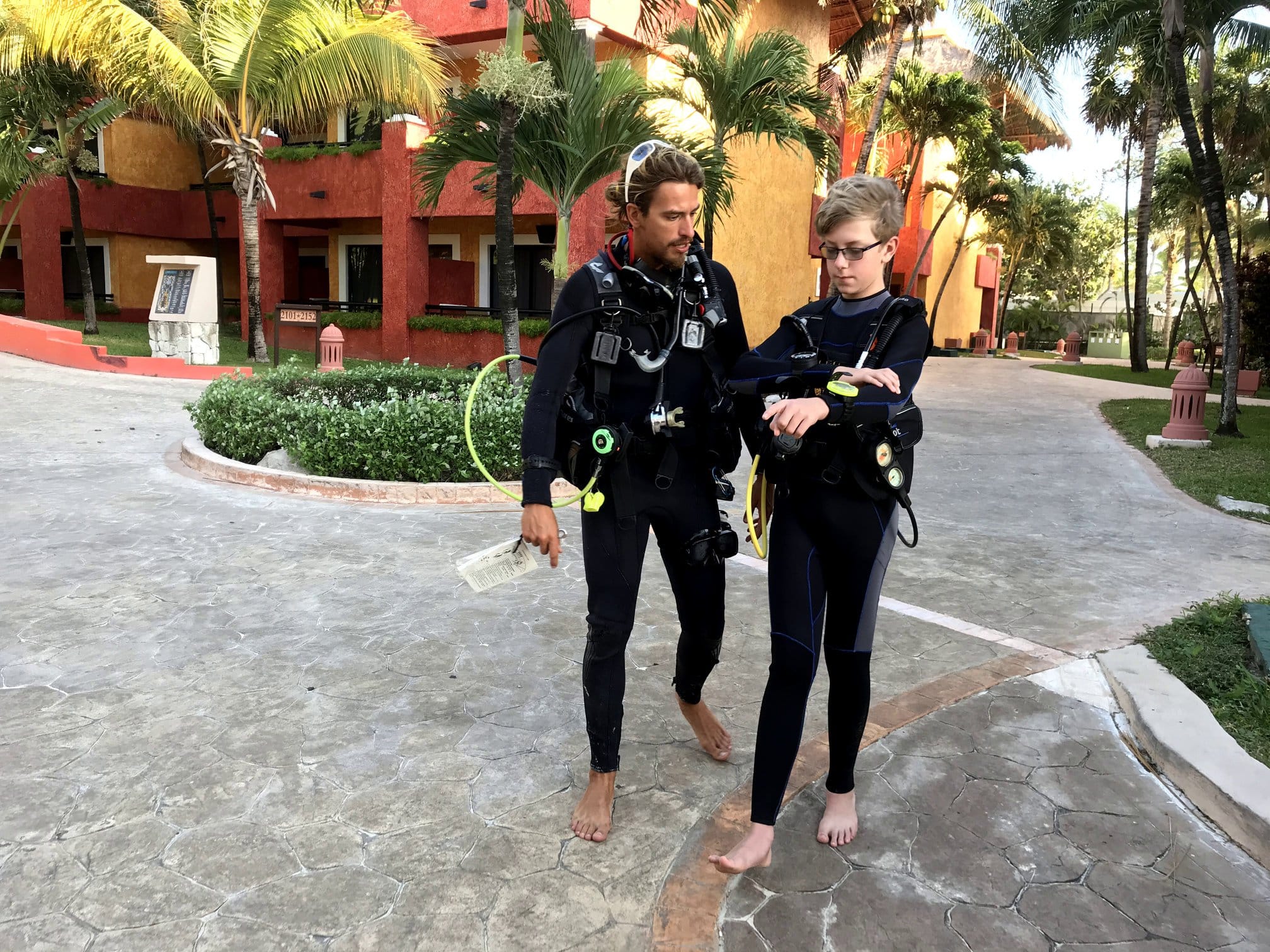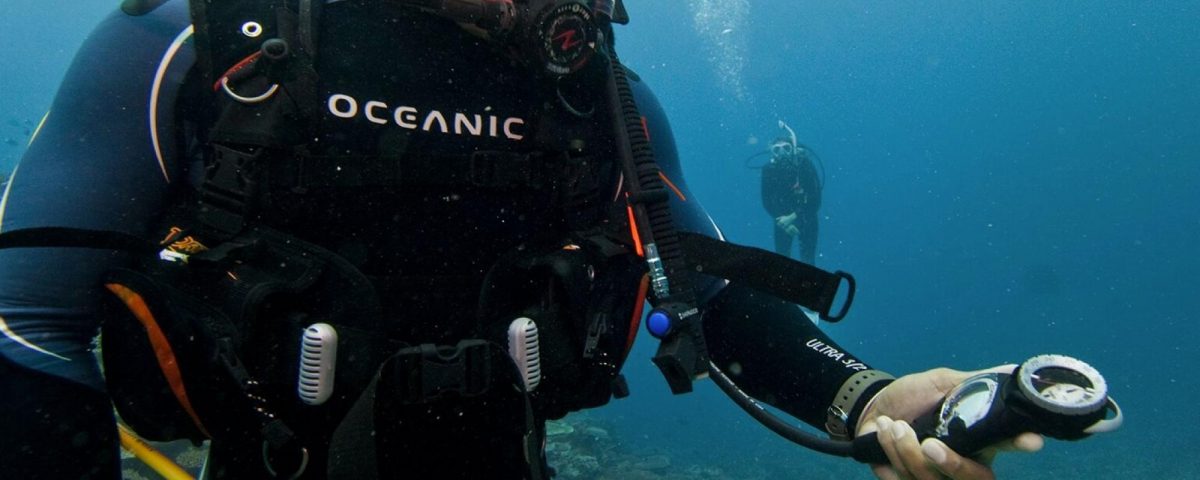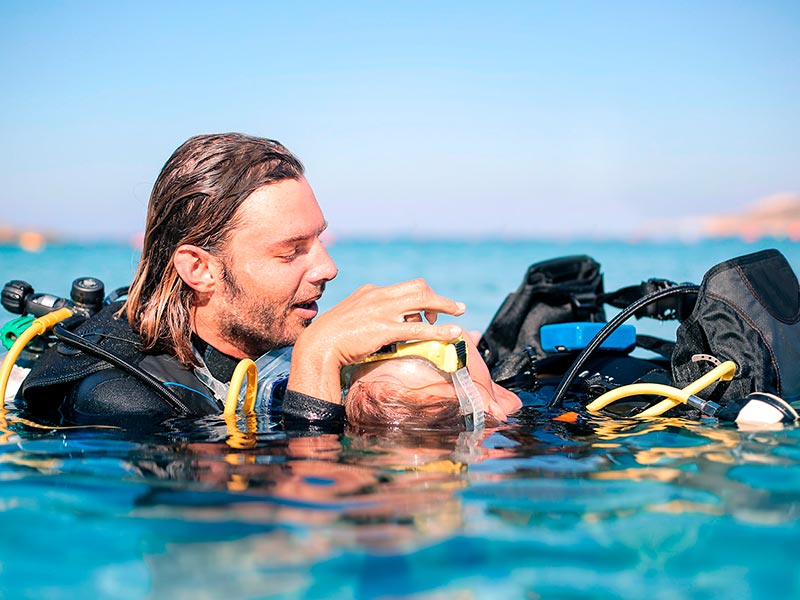The importance of the compass in diving is unquestionable. Whether we have submerged from a boat or from the shore, it is a fundamental tool to orient ourselves while diving and return to our starting point.

Best Scuba Diving Places in The Caribbean Sea: 7 Essential Destinations
17/03/2020
How Do I Choose a Diving Light? | We Give You the Best Tips
02/04/2020What is a compass and what is it for?
To understand the importance of the compass in diving, first of all, it is essential to know what they are. Compasses were invented in Asia in the 9th century. They are tools with a magnetized needle point that continuously points us to the magnetic north of the earth. As we know where is the north, we can also know the rest of the cardinal points that we have around us. This way, we can orient ourselves both on land, in the sea or in the air.
In the case of scuba diving compasses, they help us locate our current situation and follow a previously established route. The importance of the compass in diving is so high that you begin to learn how to use them during the Open Water Diver Course. But you improve their use in the PADI Advanced Diver Courses.
The reason for spreading their learning across multiple courses is simple. While doing the first course, divers have too many concepts to learn and assimilate. In addition, they do their first dives with a guide and, therefore, they don’t need to use a compass. So, it is better that they focus on learning how to use the dive compass well in advanced courses.


Parts of a diving compass:
Another important point to understand the importance of the compass in diving is to know the parts that compose it. Basically there are 4, which we describe below:
Main window: This is the part that indicates the 4 cardinal points and 360 degrees. Here we can observe and search the information of the course (in degrees) that we want to follow.
Slide window: This is the internal part of the compass, facing your body. In this way, you can also see the information in degrees, as you do with the main window. It is important to note that the information we see in the front window is the opposite of what we see in the main window. Therefore, it is important to coordinate with your dive buddy taking this detail into account.
Bezel: This is the upper rotating wheel, which has 360 degrees engraved. It is used to set starting directions and make turns in underwater navigation.
Lubber line: This is the line that is marked in different colors, depending on the compass model. It serves to set the course to which we want to go.
Factors to consider about the use of compass in diving
At this point in the article, the importance of the compass in diving is quite clear. However, we are going to give you some tips and guidelines to maximize the use of them.
• After buying a scuba diving compass, the first thing we should do is practice with it until we fully control it. We cannot jump into the water with doubts. Any failure can be a danger.
• The reading should be done with the compass in a horizontal position, since its maximum inclination is between 20º and 40º. If this limit is exceeded, your disk may jam and the reading would be inaccurate.
• During the dive, we must keep the compass away from other metal objects. In this way, we avoid movement distortions of the magnetized needle.
• From time to time, we must compare our compass with others, to check that the alignment is correct.
• We must avoid hitting it.
• We must wash it after each use.

You already know the importance of compasses in diving. If you have any questions, you can ask us what you want by filling out the form below. You can also tell us which is your favorite compass or your best experiences using them.



